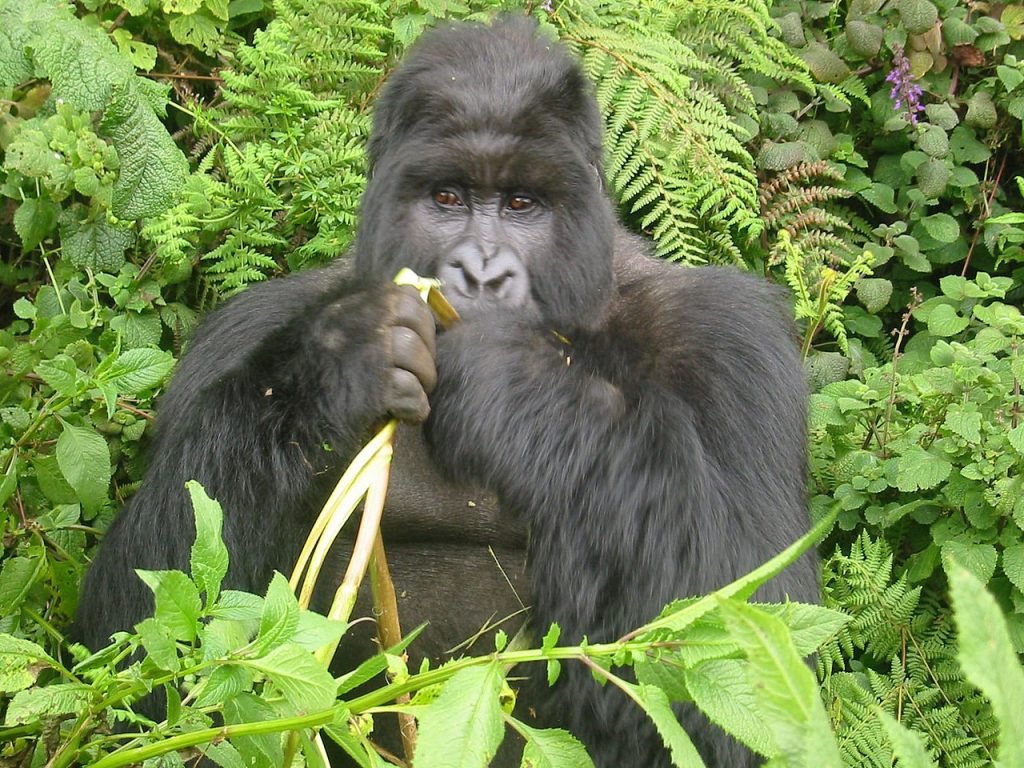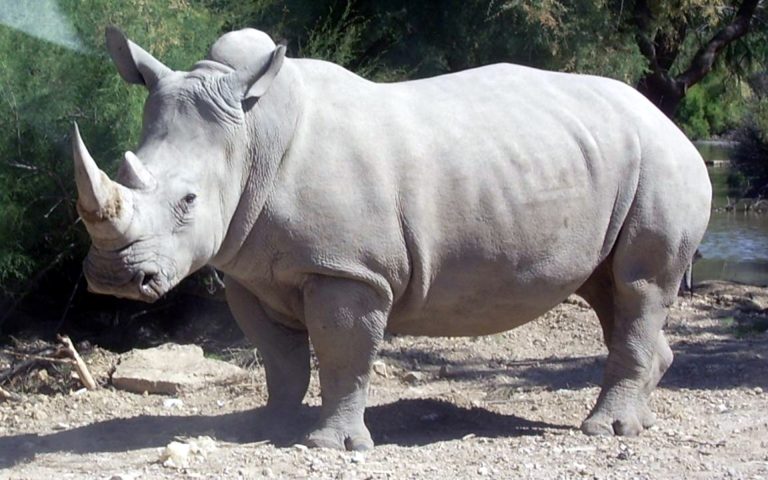- Blogs & Tips
Gorilla Diet Explained: What do gorillas eat
- Last updated: 5 months ago
- By LSTWebmasters
Gorilla Diet Explained: What do gorillas eat
Gorilla diet surprises most first-time trekkers especially given the fact that gorillas are giant, many may think they feed on flesh or something else, surprisingly, these muscle-bound icons run almost entirely on plants, not on the drama of Hollywood chase scenes.
Picture a silverback lounging like a boulder come to life, lazily stripping celery-green shoots while birds gossip overhead.
In the misty highlands, mountain gorillas hunker down with an all-you-can-chew buffet of leaves—think wild celery stalks, thistle heads, nettle shoots and into the lowland jungle and the will be seen eating figs, guavas, and other sugar-packed fruits top the bill… at least until the dry months hit.
When the canopy’s fruit bowl empties, every troop turns resourceful—cracking seeds, stripping bark, and sharing the crunchy haul like trail mix.
While for the Western gorillas treat the forest like a 200-item salad bar, hovering around ginger and arrowroot plants the way we linger near dessert. Up on the volcanic slopes of Virunga, mountain gorillas make do with just 38 plant options, yet they graze so confidently you’d swear they curated the spread themselves.
The Daily Menu: Greens, Greens, and More Greens
Gorillas eat to remain bulk, not speed. Roughly 70–80 % of their intake is leafy matter—think wild celery, bamboo shoots, thistles, nettles. They chomp through up to 30 kg (65 lb) a day, which would be like you finishing a whole wheelbarrow of salad before lunch.
| Food Group | Mountain Gorilla | Lowland Gorilla |
| Leaves & Shoots | 70–80 % | 60 % |
| Fruit | 5–10 % (seasonal) | 25–30 % |
| Bark & Roots | 5 % | 5 % |
| Insects | <2 % | <3 % |
(Percentages are averages, but every troop adjusts to what the forest pantry offers.)
Gorilla Diet Explained: What do gorillas eat Pictorial



Seasonal Food: Fruit and Flowers
When fig and wild guava ripen, the forest throws a party. Troops travel farther, grunting with the excitement of kids spotting an ice-cream truck. Fruit spikes their sugar, which means bursts of playful chest slaps you’ll want to catch on camera.
Protein Snacks: Ants, Termites, and the Odd Snail
Gorillas are primarily omnivores meaning they eat primary vegetable, but they may also be seen feeding on insects. By the use of a stick or a thick finger, the gorilla dips it into a termite mound and just like that it catches the insect which is a strong source of calcium and sodium.
Diet Shapes Their World
- Territorial Range: High-fruit diets in lowland forests stretch ranges wider, so trackers hike longer.
- Social Mood: Leaf-heavy months equal slower mornings; fruit season sparks wrestling matches in the vines.
- Digestive Genius: A colossal gut ferments cellulose into energy—an internal compost heap that keeps them warm on misty volcano slopes.
Tips for Spotting Feeding Sessions
- Listen for the rip of stems snapping; it sounds like someone tearing thick cardboard.
- Watch for fresh green showers falling from above—juveniles drop leftovers like toddlers flinging peas.
- Early morning & late afternoon are prime “buffet hours.” Guides time treks around these windows.
- Stay downwind. Your deodorant smells tasty to bees—and distracting to gorillas.
- Hold the flash. Sudden light can end lunch early and earn you a side-eye from the silverback.
Suggested Packages
Gorilla Diet FAQ
Do gorillas ever hunt?
No. Gorillas lack the claws and sprint capacity of chimps and also given the fact that gorillas do not need meat, they don’t hunt. Their jaw power is meant for bark, not chase scenes. So no, you won’t see a silverback stalking antelope—but you will see it just mowing down vegetation like a furry lawnmower.
How does their plant diet build so much muscle?
Think of the gorilla gut as a factory. Bacteria ferment cellulose into fatty acids, which act like slow-release power bars. Add nonstop training—climbing, knuckle-walking, mock fights—and you get biceps without a protein shake in sight.
Can gorillas digest everything they eat?
Not fully. Seeds and fibrous chunks pass through, re-planting the forest. They’re accidental gardeners, scattering future fruit trees each time they… fertilize a trail.
Why do mountain and lowland gorillas eat differently?
Due to evolution and adaptation, different gorilla sub species will feed depending on what the environment has. Cloud forests grow fewer fruit trees, so mountain troops double down on leaves. Lowland forests burst with fruit, letting those gorillas binge on figs like weekend brunch devotees.
Is human food safe for gorillas?
Absolutely not. A single cookie carries microbes and sugars their systems never evolved to handle. Feeding wildlife also trains them to beg—bad news for both sides. Keep snacks zipped away; enjoy watching natural foraging instead.
Conclusion
Imagine standing a few meters away while a juvenile gorilla stares back, leafy lips bright green, as though inviting you to share the salad. That heartbeat-loud silence is why travellers call gorilla trekking life-changing. Ready to trade office fluorescents for dappled jungle light?
Friendly Gorillas Safaris can secure your permit, guide you up the misty paths, and translate every grunt and rustle into a story you’ll tell for decades. Click below—let your own diet stay the same, but feed your soul something wild.
Send Enquiry
Step into the mist and meet a wild silverback face to face.
In that silent moment, something inside you changes forever and that time, you will understand that gorilla trekking isn’t just a trip but a soul-stirring journey.
GET A QUOTE
Limited permits available.










